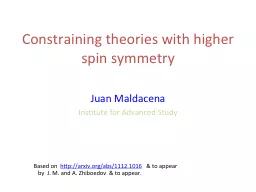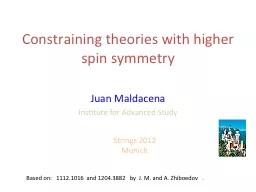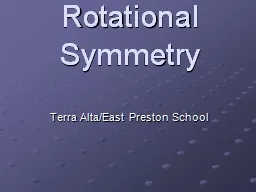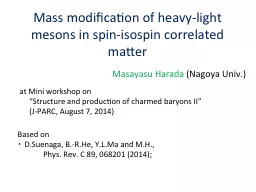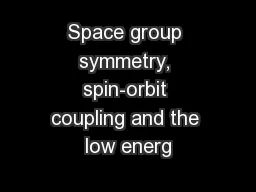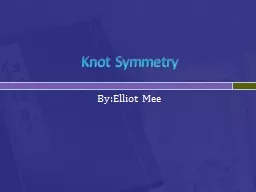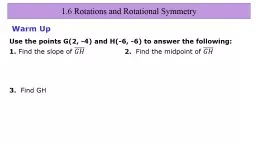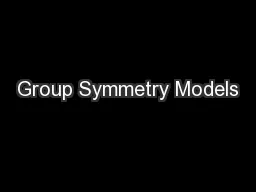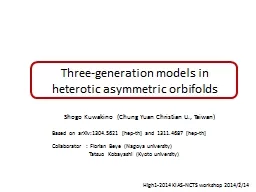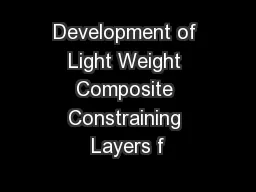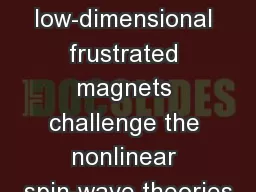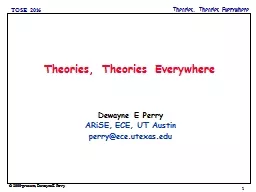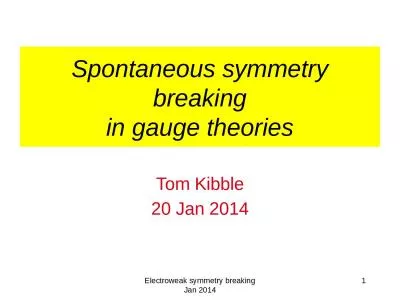PPT-Constraining theories with higher spin symmetry
Author : danika-pritchard | Published Date : 2015-11-13
Juan Maldacena Institute for Advanced Study Based on httparxivorgabs 11121016 amp to appear by J M and A Zhiboedov amp to appear Elementary particles can have
Presentation Embed Code
Download Presentation
Download Presentation The PPT/PDF document "Constraining theories with higher spin s..." is the property of its rightful owner. Permission is granted to download and print the materials on this website for personal, non-commercial use only, and to display it on your personal computer provided you do not modify the materials and that you retain all copyright notices contained in the materials. By downloading content from our website, you accept the terms of this agreement.
Constraining theories with higher spin symmetry: Transcript
Download Rules Of Document
"Constraining theories with higher spin symmetry"The content belongs to its owner. You may download and print it for personal use, without modification, and keep all copyright notices. By downloading, you agree to these terms.
Related Documents

